Arjuna Flenner
Extracting Explanations, Justification, and Uncertainty from Black-Box Deep Neural Networks
Mar 13, 2024Abstract:Deep Neural Networks (DNNs) do not inherently compute or exhibit empirically-justified task confidence. In mission critical applications, it is important to both understand associated DNN reasoning and its supporting evidence. In this paper, we propose a novel Bayesian approach to extract explanations, justifications, and uncertainty estimates from DNNs. Our approach is efficient both in terms of memory and computation, and can be applied to any black box DNN without any retraining, including applications to anomaly detection and out-of-distribution detection tasks. We validate our approach on the CIFAR-10 dataset, and show that it can significantly improve the interpretability and reliability of DNNs.
Detecting GAN generated Fake Images using Co-occurrence Matrices
Mar 15, 2019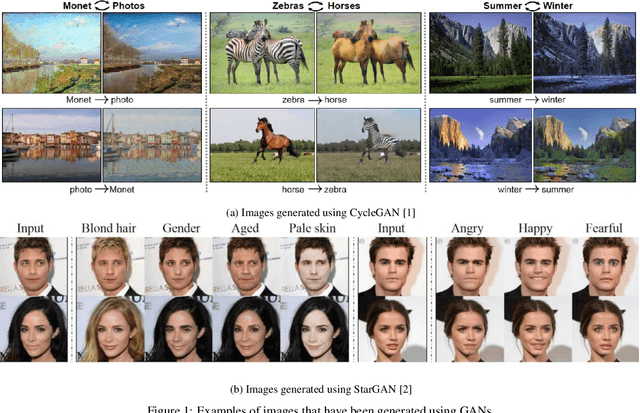
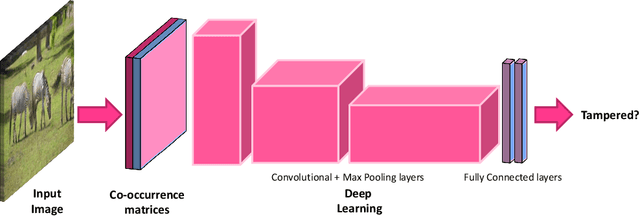


Abstract:The advent of Generative Adversarial Networks (GANs) has brought about completely novel ways of transforming and manipulating pixels in digital images. GAN based techniques such as Image-to-Image translations, DeepFakes, and other automated methods have become increasingly popular in creating fake images. In this paper, we propose a novel approach to detect GAN generated fake images using a combination of co-occurrence matrices and deep learning. We extract co-occurrence matrices on three color channels in the pixel domain and train a model using a deep convolutional neural network (CNN) framework. Experimental results on two diverse and challenging GAN datasets comprising more than 56,000 images based on unpaired image-to-image translations (cycleGAN [1]) and facial attributes/expressions (StarGAN [2]) show that our approach is promising and achieves more than 99% classification accuracy in both datasets. Further, our approach also generalizes well and achieves good results when trained on one dataset and tested on the other.
Resampling Forgery Detection Using Deep Learning and A-Contrario Analysis
Mar 01, 2018



Abstract:The amount of digital imagery recorded has recently grown exponentially, and with the advancement of software, such as Photoshop or Gimp, it has become easier to manipulate images. However, most images on the internet have not been manipulated and any automated manipulation detection algorithm must carefully control the false alarm rate. In this paper we discuss a method to automatically detect local resampling using deep learning while controlling the false alarm rate using a-contrario analysis. The automated procedure consists of three primary steps. First, resampling features are calculated for image blocks. A deep learning classifier is then used to generate a heatmap that indicates if the image block has been resampled. We expect some of these blocks to be falsely identified as resampled. We use a-contrario hypothesis testing to both identify if the patterns of the manipulated blocks indicate if the image has been tampered with and to localize the manipulation. We demonstrate that this strategy is effective in indicating if an image has been manipulated and localizing the manipulations.
Boosting Image Forgery Detection using Resampling Features and Copy-move analysis
Feb 19, 2018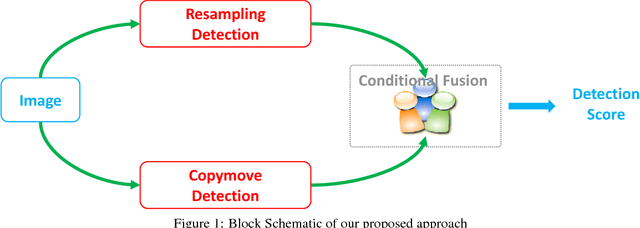
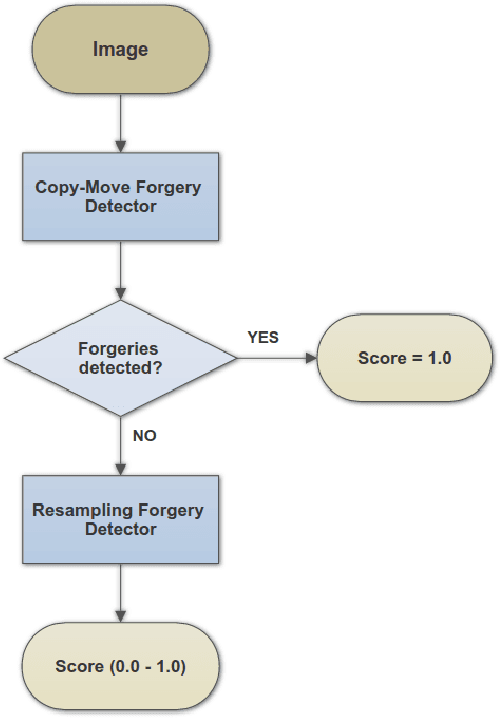

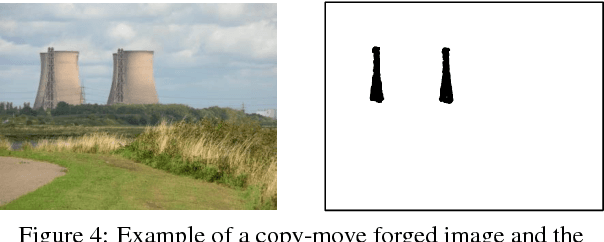
Abstract:Realistic image forgeries involve a combination of splicing, resampling, cloning, region removal and other methods. While resampling detection algorithms are effective in detecting splicing and resampling, copy-move detection algorithms excel in detecting cloning and region removal. In this paper, we combine these complementary approaches in a way that boosts the overall accuracy of image manipulation detection. We use the copy-move detection method as a pre-filtering step and pass those images that are classified as untampered to a deep learning based resampling detection framework. Experimental results on various datasets including the 2017 NIST Nimble Challenge Evaluation dataset comprising nearly 10,000 pristine and tampered images shows that there is a consistent increase of 8%-10% in detection rates, when copy-move algorithm is combined with different resampling detection algorithms.
Detection and Localization of Image Forgeries using Resampling Features and Deep Learning
Jul 03, 2017
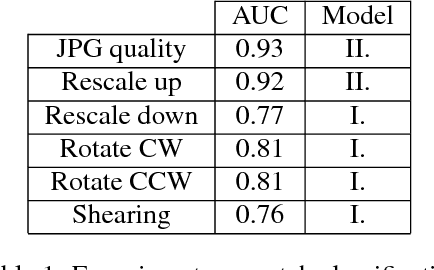


Abstract:Resampling is an important signature of manipulated images. In this paper, we propose two methods to detect and localize image manipulations based on a combination of resampling features and deep learning. In the first method, the Radon transform of resampling features are computed on overlapping image patches. Deep learning classifiers and a Gaussian conditional random field model are then used to create a heatmap. Tampered regions are located using a Random Walker segmentation method. In the second method, resampling features computed on overlapping image patches are passed through a Long short-term memory (LSTM) based network for classification and localization. We compare the performance of detection/localization of both these methods. Our experimental results show that both techniques are effective in detecting and localizing digital image forgeries.
Graph clustering, variational image segmentation methods and Hough transform scale detection for object measurement in images
Sep 23, 2016



Abstract:We consider the problem of scale detection in images where a region of interest is present together with a measurement tool (e.g. a ruler). For the segmentation part, we focus on the graph based method by Flenner and Bertozzi which reinterprets classical continuous Ginzburg-Landau minimisation models in a totally discrete framework. To overcome the numerical difficulties due to the large size of the images considered we use matrix completion and splitting techniques. The scale on the measurement tool is detected via a Hough transform based algorithm. The method is then applied to some measurement tasks arising in real-world applications such as zoology, medicine and archaeology.
Improving Image Clustering using Sparse Text and the Wisdom of the Crowds
May 08, 2014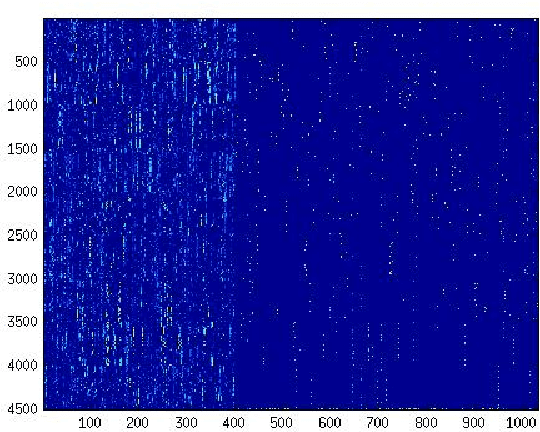


Abstract:We propose a method to improve image clustering using sparse text and the wisdom of the crowds. In particular, we present a method to fuse two different kinds of document features, image and text features, and use a common dictionary or "wisdom of the crowds" as the connection between the two different kinds of documents. With the proposed fusion matrix, we use topic modeling via non-negative matrix factorization to cluster documents.
Multiclass Data Segmentation using Diffuse Interface Methods on Graphs
Jan 17, 2014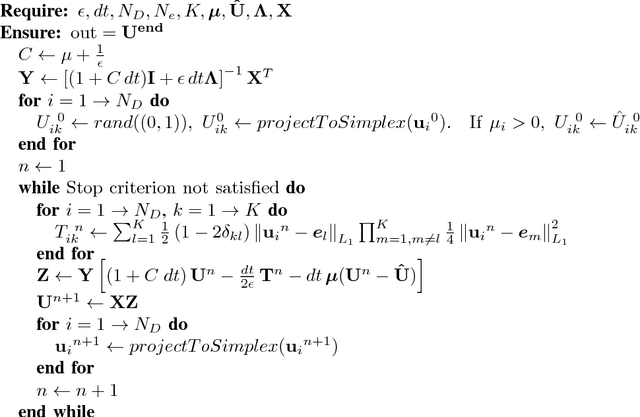
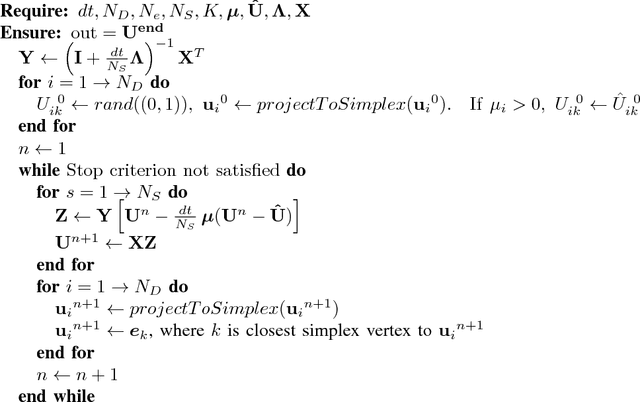
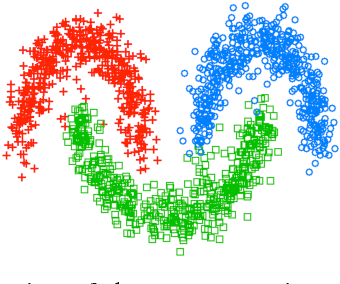
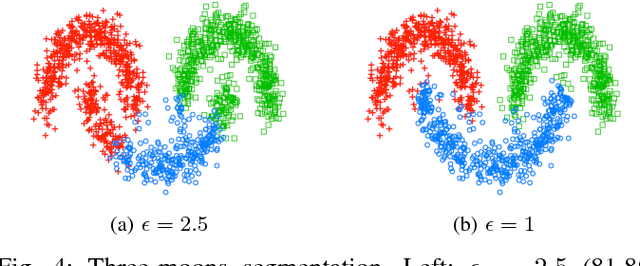
Abstract:We present two graph-based algorithms for multiclass segmentation of high-dimensional data. The algorithms use a diffuse interface model based on the Ginzburg-Landau functional, related to total variation compressed sensing and image processing. A multiclass extension is introduced using the Gibbs simplex, with the functional's double-well potential modified to handle the multiclass case. The first algorithm minimizes the functional using a convex splitting numerical scheme. The second algorithm is a uses a graph adaptation of the classical numerical Merriman-Bence-Osher (MBO) scheme, which alternates between diffusion and thresholding. We demonstrate the performance of both algorithms experimentally on synthetic data, grayscale and color images, and several benchmark data sets such as MNIST, COIL and WebKB. We also make use of fast numerical solvers for finding the eigenvectors and eigenvalues of the graph Laplacian, and take advantage of the sparsity of the matrix. Experiments indicate that the results are competitive with or better than the current state-of-the-art multiclass segmentation algorithms.
Multiclass Semi-Supervised Learning on Graphs using Ginzburg-Landau Functional Minimization
Jun 06, 2013
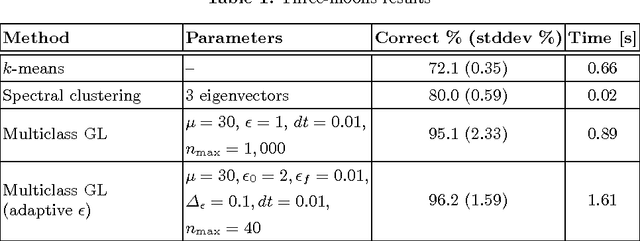
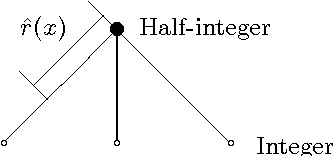

Abstract:We present a graph-based variational algorithm for classification of high-dimensional data, generalizing the binary diffuse interface model to the case of multiple classes. Motivated by total variation techniques, the method involves minimizing an energy functional made up of three terms. The first two terms promote a stepwise continuous classification function with sharp transitions between classes, while preserving symmetry among the class labels. The third term is a data fidelity term, allowing us to incorporate prior information into the model in a semi-supervised framework. The performance of the algorithm on synthetic data, as well as on the COIL and MNIST benchmark datasets, is competitive with state-of-the-art graph-based multiclass segmentation methods.
Multiclass Diffuse Interface Models for Semi-Supervised Learning on Graphs
Dec 05, 2012
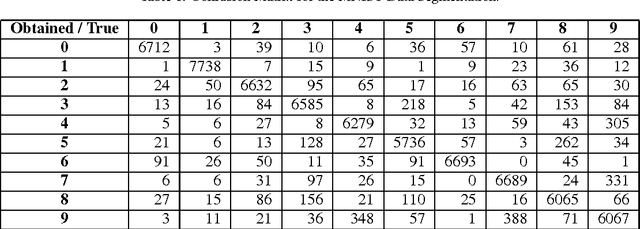
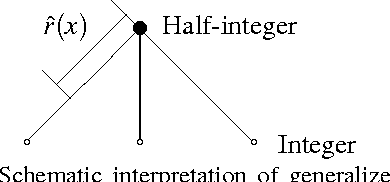
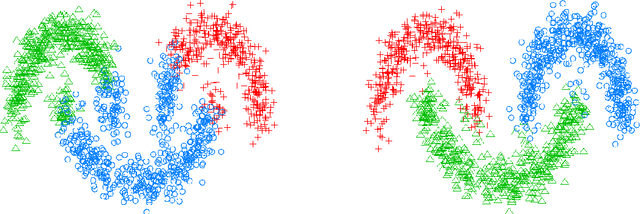
Abstract:We present a graph-based variational algorithm for multiclass classification of high-dimensional data, motivated by total variation techniques. The energy functional is based on a diffuse interface model with a periodic potential. We augment the model by introducing an alternative measure of smoothness that preserves symmetry among the class labels. Through this modification of the standard Laplacian, we construct an efficient multiclass method that allows for sharp transitions between classes. The experimental results demonstrate that our approach is competitive with the state of the art among other graph-based algorithms.
 Add to Chrome
Add to Chrome Add to Firefox
Add to Firefox Add to Edge
Add to Edge